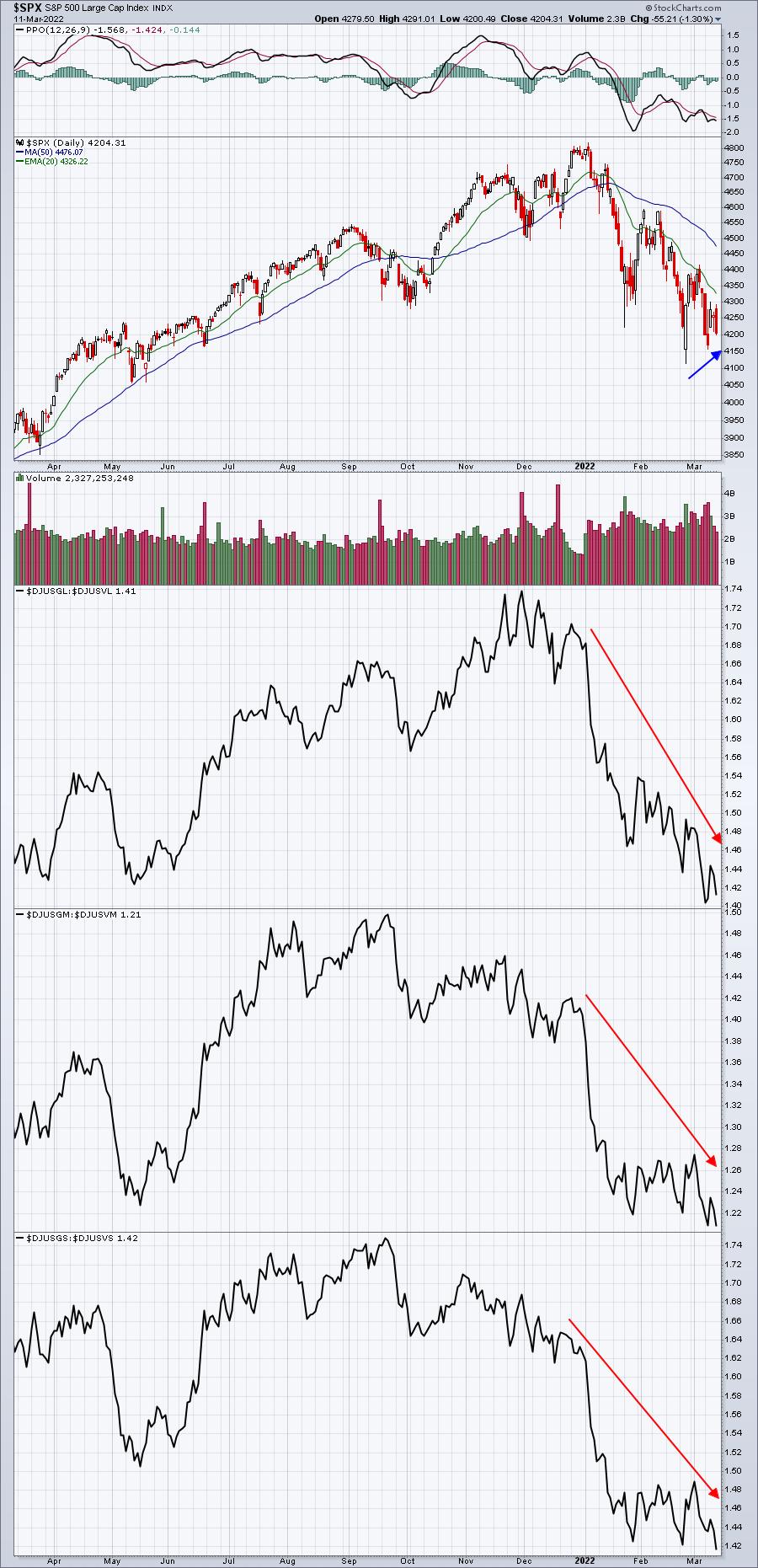The prospects of surging inflation and higher interest rates hinder the performance of growth stocks in a big way. Remember, their valuations are highly dependent on future promises of earnings and earnings growth. Inflation and higher rates eat away at that future growth. And a recession changes the picture completely as growth forecasts are significantly lowered.
The Federal Reserve meets on Tuesday and Wednesday and they've promised to embark on a rate-raising campaign, one targeted at bringing inflation under control. I believe the upcoming recession will help to take care of it, just as it did in 1990 during the Persian Gulf War. In case you haven't been watching, consumer sentiment has been dropping for awhile now and that's a leading indicator of recession. Rising crude oil prices ($WTIC), interest rates, and the Russia-Ukraine conflict will add to the recessionary pressures as well. But let's discuss the history of recent recessions. There have been 10 recessions since 1950, as follows:
- 2020 (COVID-19 pandemic, cyclical bear market)
- 2007-2009 (financial crisis, secular bear market)
- 2001 (dot-com bubble, secular bear market)
- 1990-1991 (Persian Gulf War, cyclical bear market)
- 1981-1982 (monetary policy, cyclical bear market)
- 1980 (rapidly-rising rates to fight inflation, secular bear market)
- 1973-1975 (oil crisis and stagflation, secular bear market)
- 1969-1970 (inflation and Vietnam War, secular bear market)
- 1960-1961 (monetary policy, cyclical bear market)
- 1957-1958 (monetary policy, cyclical bear market)
- 1953-1954 (monetary policy, cyclical bear market)
To summarize, ALL 10 recessions have occurred during a bear market of some type - either the shorter version cyclical bear market (within a secular bull market) or the longer version secular bear market. Please understand that recessions can lead to the shorter version bear markets. Of the 10 recessions since 1950, 6 have occurred during secular BULL markets. I believe 2022 will mark the 7th out of 11. It doesn't matter what the news stories are, that doesn't change the fact that interest rates remain near historic lows. Simply put, there is no other place to invest given the cost of funds.
But cyclical bear markets are painful too. I don't believe we've reached bottom. History shows that inflation peaks result in MASSIVE outperformance by growth stocks, so timing inflation, and its likely future drop, will be the key to marking the stock market bottom. If you think inflation remains a problem for many months or years, then investing in the U.S. stock market is probably not the best choice right now. I believe inflation is close to peaking. Feel free to disagree. I said at the beginning of the year that we had 3 or 4 CPI reports that would show rising inflation. After that, I expect to see it begin to drop.
For what it's worth, Wall Street is not anticipating better days ahead for growth stocks - at least not yet. Here are 3 key growth vs. value ratios that are trending lower with the S&P 500, a signal that further selling ahead is likely:

Listen, these ratios will bounce back, and so too will growth stocks in general. But holding them ahead of an impending recession with the Federal Reserve about to announce its first rate hike is probably not the best choice right now. Keep one thing in mind, however. Stock market bottoms take place LONG BEFORE the fundamental news improves. The 1990-1991 recession started in July 1990 and ended March 1991. When did the S&P 500 bottom and when did the relative ratio of growth vs. value bottom? Both in October 1990, 5 months prior to the end of the recession. The stock market prices in both good news and bad news months ahead of the actual news surfacing.
I see two possible scenarios as most likely. Either we (1) bottom in March/April and have a "V" bottom and return to all-time highs later in 2022 or early 2023, or (2) bottom in March/April, but experience more sideways action throughout the summer before rallying later in 2022 and into 2023. In either case, I see the S&P 500 setting new all-time highs by the first half of 2023, at the latest.
Be ready to "hold your nose" and buy the bottom.
In the meantime, prepare for a not-so-nice Fed. Fed Chair Jay Powell and his buddies are going to hike rates on Wednesday for the first time since 2018 and likely announce a series of upcoming hikes. I expect that one group seemingly poised to benefit from rate hikes may get crushed on the announcement. I'll be providing one stock within that group in my Monday morning edition of EarningsBeats Digest, our 3x per week newsletter. It's free with no credit card required and you may cancel your subscription at any time. To receive this stock tomorrow morning, CLICK HERE and provide us your name and email address.
Happy trading!
Tom






